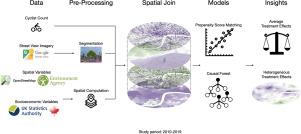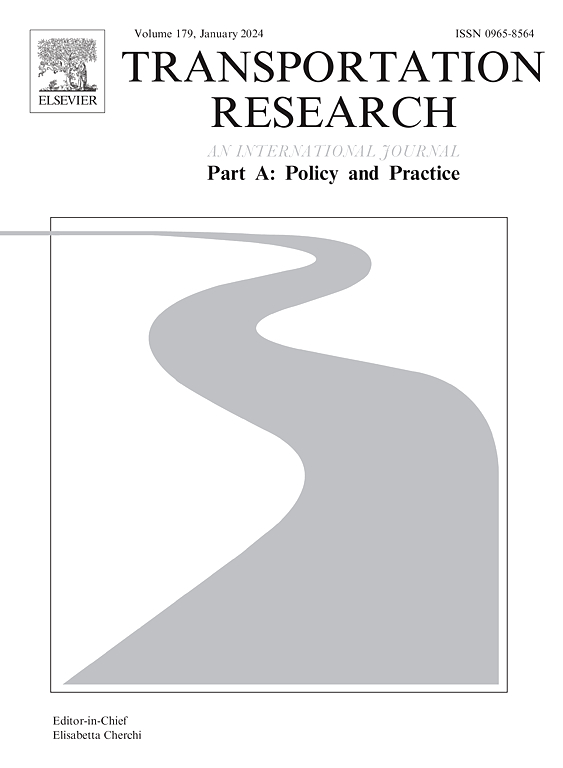利用时间序列街景图像研究建筑环境对自行车活动的因果影响
IF 6.3
1区 工程技术
Q1 ECONOMICS
Transportation Research Part A-Policy and Practice
Pub Date : 2024-10-21
DOI:10.1016/j.tra.2024.104286
引用次数: 0
摘要
骑自行车对于可持续和健康的城市至关重要。为了鼓励这种活动,从细节和广阔的空间尺度了解城市的自行车适宜性至关重要。街景图像(SVI)可以深入洞察街道特征如何影响微观交通模式,但现有研究主要是相关性的。本研究利用伦敦的历史时间序列 SVI 和骑车人数据,来分析特定城市特征对骑车人数量的因果影响。我们使用倾向得分匹配来调整潜在的混杂偏差,并应用因果森林来估计因果效应的异质性。主要发现包括:植被能明显促进自行车的骑行,坡度对自行车骑行有负面影响,自行车道对自行车骑行有积极影响。此外,植被对自行车运动的影响在人口较少地区更大,而自行车道在人口稠密地区的影响更大。这些发现有助于确定干预领域的优先次序。通过从单纯的相关性到确定不同的因果影响,这项研究为城市规划提供了宝贵的见解,强调了提高城市自行车适宜性和可持续性的设计策略。本文章由计算机程序翻译,如有差异,请以英文原文为准。

Examining the causal impacts of the built environment on cycling activities using time-series street view imagery
Cycling is vital for sustainable and healthy cities. To encourage such activities, understanding urban bikeability at both detailed and broad spatial scales is crucial. Street view imagery (SVI) offers in-depth insights into how street features influence micro-mobility patterns, but existing studies are mainly correlational. This research utilized historical time-series SVI, cyclist data from London, to discern the causal effects of specific urban features on cyclist numbers. We used propensity score matching to adjust for potential confounding biases and applied the causal forest to estimate the heterogeneity in causal effects. Key findings include: vegetation significantly boosts cycling, slope negatively impacts cycling, and bike lanes positively influence cycling. Moreover, vegetation’s impact on cycling is greater in less populated areas, while bike lanes have a stronger effect in densely populated regions. These findings help prioritize the areas of intervention. By transcending from mere correlations to identifying heterogeneous causal impacts, this study offers invaluable insights for urban planning, underscoring design strategies to enhance cities’ bikeability and sustainability.
求助全文
通过发布文献求助,成功后即可免费获取论文全文。
去求助
来源期刊
CiteScore
13.20
自引率
7.80%
发文量
257
审稿时长
9.8 months
期刊介绍:
Transportation Research: Part A contains papers of general interest in all passenger and freight transportation modes: policy analysis, formulation and evaluation; planning; interaction with the political, socioeconomic and physical environment; design, management and evaluation of transportation systems. Topics are approached from any discipline or perspective: economics, engineering, sociology, psychology, etc. Case studies, survey and expository papers are included, as are articles which contribute to unification of the field, or to an understanding of the comparative aspects of different systems. Papers which assess the scope for technological innovation within a social or political framework are also published. The journal is international, and places equal emphasis on the problems of industrialized and non-industrialized regions.
Part A''s aims and scope are complementary to Transportation Research Part B: Methodological, Part C: Emerging Technologies and Part D: Transport and Environment. Part E: Logistics and Transportation Review. Part F: Traffic Psychology and Behaviour. The complete set forms the most cohesive and comprehensive reference of current research in transportation science.

 求助内容:
求助内容: 应助结果提醒方式:
应助结果提醒方式:


